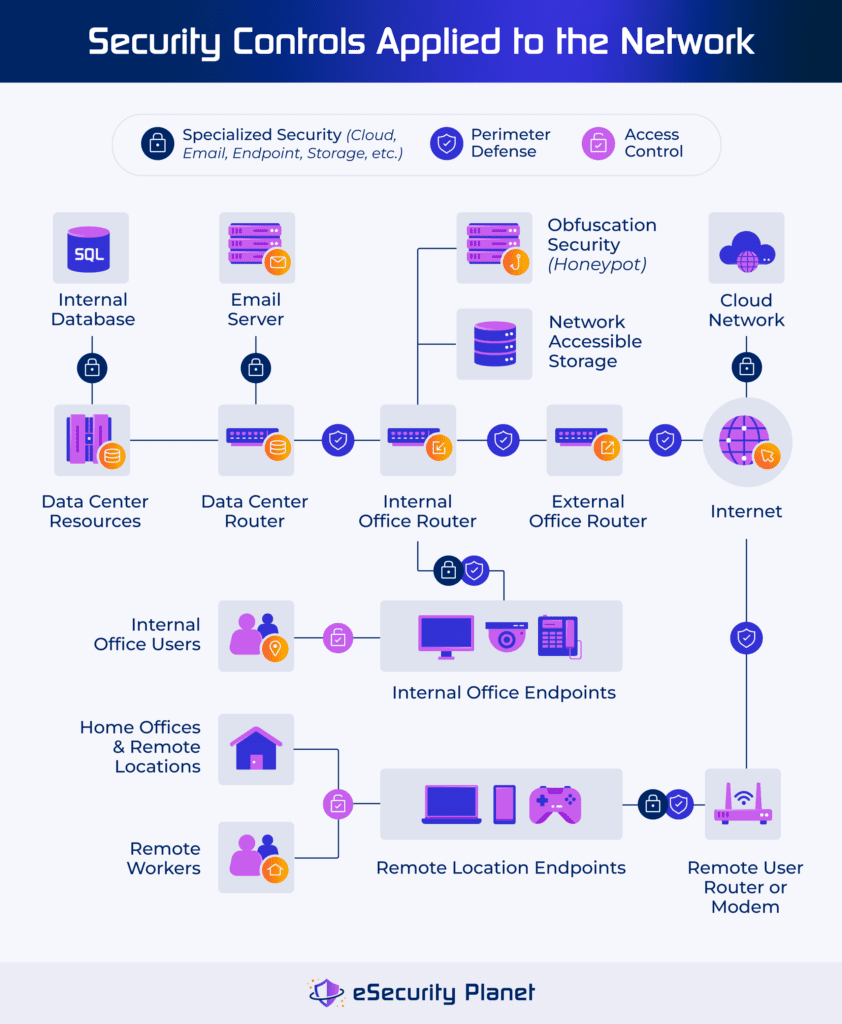Protect Your Assets with FFT Perimeter Intrusion Solutions for Maximum Security
How Data and Network Safety Shields Versus Arising Cyber Risks
In an age marked by the quick development of cyber threats, the relevance of information and network safety has actually never been more pronounced. Organizations are increasingly dependent on advanced protection measures such as file encryption, gain access to controls, and proactive surveillance to protect their digital possessions. As these hazards come to be a lot more complex, comprehending the interplay in between information safety and network defenses is necessary for mitigating dangers. This discussion intends to explore the important parts that fortify an organization's cybersecurity stance and the approaches necessary to stay ahead of possible susceptabilities. What continues to be to be seen, nonetheless, is just how these actions will certainly advance despite future obstacles.
Recognizing Cyber Hazards

The ever-evolving nature of modern technology continuously presents new susceptabilities, making it vital for stakeholders to remain alert. Individuals may unknowingly succumb social design techniques, where assaulters manipulate them right into revealing sensitive information. Organizations face distinct difficulties, as cybercriminals often target them to make use of useful data or interrupt procedures.
Additionally, the surge of the Internet of Things (IoT) has broadened the assault surface, as interconnected devices can act as entrance factors for opponents. Recognizing the significance of durable cybersecurity practices is essential for mitigating these risks. By fostering a detailed understanding of cyber companies, threats and people can carry out effective methods to secure their electronic properties, making certain strength despite a significantly complicated threat landscape.
Trick Parts of Data Protection
Making sure information protection requires a multifaceted method that includes numerous key components. One essential element is data encryption, which transforms delicate information right into an unreadable style, easily accessible only to accredited customers with the appropriate decryption secrets. This serves as an important line of protection versus unapproved accessibility.
One more vital element is gain access to control, which manages that can watch or control data. By implementing strict customer authentication procedures and role-based accessibility controls, companies can decrease the danger of insider risks and data violations.

Furthermore, data concealing methods can be utilized to safeguard sensitive information while still permitting for its use in non-production environments, such as screening and development. fft perimeter intrusion solutions.
Network Security Approaches
Carrying out durable network security methods is necessary for securing an organization's electronic facilities. These strategies entail a multi-layered approach that consists of both software and hardware remedies designed to secure the integrity, discretion, and availability of information.
One critical component of network security is the deployment of firewalls, which work as a barrier between trusted inner networks and untrusted outside networks. Firewall softwares can be hardware-based, software-based, or a combination of both, and they assist filter inbound and outgoing web traffic based upon predefined security policies.
Furthermore, intrusion detection and prevention systems (IDPS) play an important function in monitoring network web traffic for questionable activities. These systems can signal administrators to possible breaches and take activity to alleviate dangers in real-time. Regularly patching and upgrading software program is also critical, as vulnerabilities can be made use of by cybercriminals.
Furthermore, applying Virtual Private Networks (VPNs) ensures safe and secure remote gain access to, securing data transferred over public networks. Segmenting networks can reduce the assault surface and include potential violations, limiting their impact on the overall facilities. By adopting these techniques, organizations can successfully strengthen their networks against emerging cyber threats.
Best Practices for Organizations
Establishing best techniques for organizations is important in preserving a strong security position. A detailed strategy to information and network protection begins with normal threat evaluations to identify vulnerabilities and prospective hazards. Organizations must apply durable accessibility controls, making certain that just authorized personnel can access sensitive data and systems. Multi-factor verification (MFA) ought to be a basic demand to boost safety layers.
In addition, continual worker training and awareness programs are crucial. Employees ought to be educated on recognizing phishing attempts, social engineering methods, and the value of adhering to safety and security protocols. Regular updates and patch administration for software application and systems are likewise important to shield against understood susceptabilities.
Organizations should examine and create event action prepares to ensure preparedness for possible violations. This consists of developing clear interaction networks and roles during a protection occurrence. Data file encryption need to be employed both at rest and in transportation to guard delicate info.
Finally, performing periodic audits and compliance checks will aid guarantee adherence to well established plans and relevant laws - fft perimeter intrusion solutions. By complying with these finest methods, organizations can considerably enhance their strength versus arising cyber risks and safeguard their critical assets
Future Trends in Cybersecurity
As companies navigate an increasingly complicated digital landscape, the future of cybersecurity is positioned to develop significantly, driven by arising technologies and moving danger standards. One prominent pattern is the integration of fabricated knowledge (AI) and machine learning (ML) into protection structures, enabling for real-time threat detection and feedback automation. These technologies can assess large amounts of data to recognize anomalies and potential violations a lot more successfully than traditional techniques.
An additional crucial pattern is the increase of zero-trust design, which requires continual verification of user identities and tool protection, despite their area. This approach minimizes the risk of insider hazards and improves protection against outside assaults.
Additionally, the boosting fostering of cloud services necessitates durable cloud security strategies that attend to unique vulnerabilities connected with cloud environments. As remote work comes to be a long-term fixture, securing endpoints will additionally become paramount, bring about a raised concentrate on endpoint discovery and reaction (EDR) services.
Last but not least, governing compliance will certainly remain to shape cybersecurity methods, pushing organizations to adopt much more rigid information security procedures. Accepting these fads will certainly be necessary for organizations to fortify their defenses and browse the evolving landscape of cyber hazards efficiently.
Final Thought
Finally, the execution of robust data and network safety procedures is essential for organizations to safeguard against arising cyber hazards. By making use of file encryption, accessibility control, and reliable network safety and security methods, organizations can considerably decrease vulnerabilities and protect sensitive information. Adopting finest practices even more improves resilience, preparing organizations data cyber security to encounter advancing cyber obstacles. As cybersecurity remains to progress, remaining notified about future fads will be crucial in maintaining a solid protection against potential risks.
In an age noted by the rapid advancement of cyber hazards, the significance of data and network protection has actually never ever been more obvious. As these threats become a lot more complex, recognizing the interaction in between information safety and network defenses is necessary for reducing dangers. Cyber dangers encompass a wide range of harmful tasks aimed at jeopardizing the confidentiality, stability, and availability of networks and data. A thorough method to information and network safety begins with normal danger analyses to identify vulnerabilities and prospective hazards.In verdict, the implementation of robust information and network safety steps is important for organizations to protect versus emerging cyber hazards.